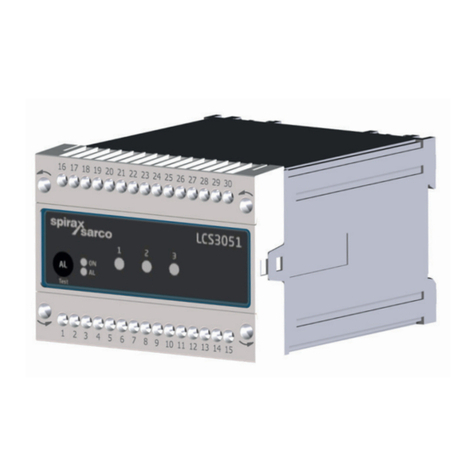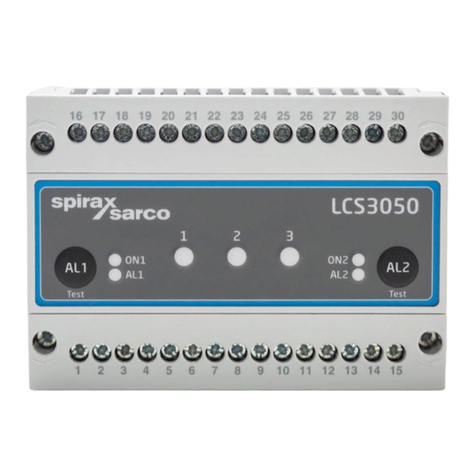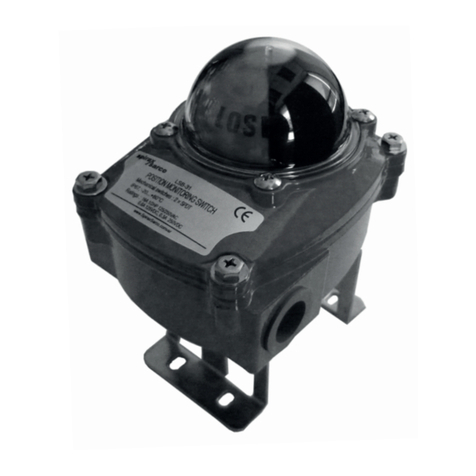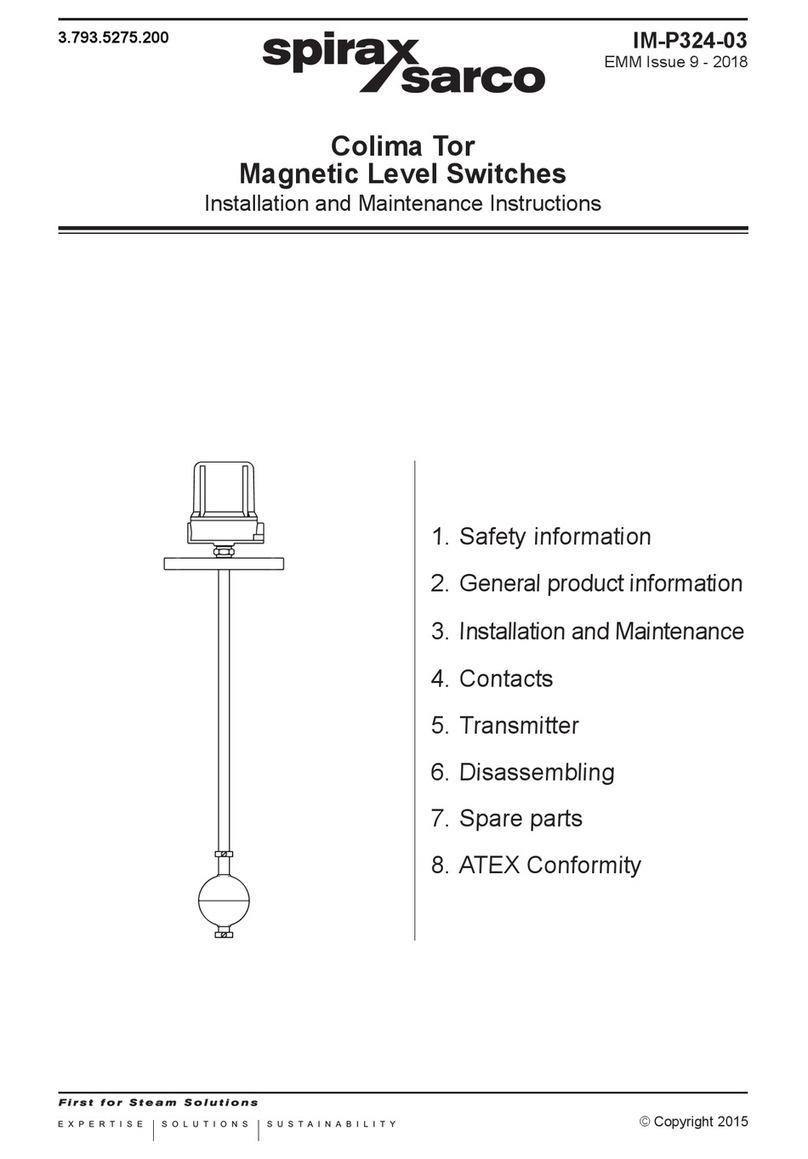
GB GB
16
§3.3 ‘V’ and ‘W’-enclosure
IMPORTANT: Before installing the switch, be sure the power supply is off.
The setpoint of the switch can be adjusted before installation if so desired, see chapter 5.
See figure 3 and 4 for the V.- and V.-D...M-series and figure 18 and 19 for the W.- and W.-D…M series.
1. Fasten the switch to a mounting board, using both mounting brackets (1) and damping washers or the mounting
plate (1). Take care that the pressure relief valve (5) is not obstructed.
If your switch has an L-type sensor (L as the last character of the second step in the model code), spacers should
also be used.
2. Remove the locking bolt (9), using an M4 allen key.
3. Remove the terminal compartment cover (10) (screw fit).
4. Fit the appropriate cable gland (EEx-d IIc) into the electrical conduit connection (4). Conically threaded glands
should be inserted at least five turns of thread, see §1.2 for the right size and type of thread.
5. Connect the electric cable to the terminal block (3) according to the code. The enclosure is also fitted with an
external earth connection. See also chapter 4.
Wire core may not exceed 1,5 mm2.
6. Check that the cable is properly enclosed, and that it is not under tension.
7. Replace the terminal compartment cover, making sure that the thread is free of dirt.
8. Replace the terminal compartment cover locking bolt.
9. If necessary, adjust the setpoint using the adjusting nut (2) located in the setting compartment (11). See also
chapter 5.
§3.4 ‘M’-enclosure
IMPORTANT: Before installing the switch, ensure that the power supply is off.
See figure 15.
1. The switch must be fitted inside an EEx-e junction box (3) of at least IP54 protection level and J7 impact
resistance level, suitable for use at 250V/10A and fitted with EEx-e terminals.
2. Drill a 40 mm hole in the side of the junction box.
3. Insert the switch complete with the stop-ring (2) and rubber washer (1) into the hole from beneath. Secure the
assembly with the lock nut (4)
- Position the switch so that the pressure relief valve (5) faces away from you and is unobstructed.
4. Wire the switch according the code on the wires, see also chapter 4.
5. Fasten the junction box containing the switch to the wall or mounting board.
6. Connect the incoming electric cable according to the code
Supplementary information for adjusting the setpoint, if desired. See figure 15
Unscrew the cover ring (6) and slip it down.
Adjust the setpoint by turning the adjusting ring (7) using a screwdriver (8).
See chapter 5 for detailed information on adjusting a setpoint.
Replace the cover ring tightly.
4. ELECTRICAL INSTALLATION
The switch is produced with a SPDT-circuit (3 or 4 way connection) or a DPDT-circuit (6 or 7 way connection), see
figure 16.
At a process pressure (or differential pressure or temperature) lower than the setpoint, the common ‘C’ is connected
to the normally closed ‘NC’.
Do not overload the circuit. The maximum load is given on the name plate (on the enclosure) or on the rating-sticker
(on the micro switch), see figure 17.
Connect the cable according to the code.
Be sure the power supply is off!































